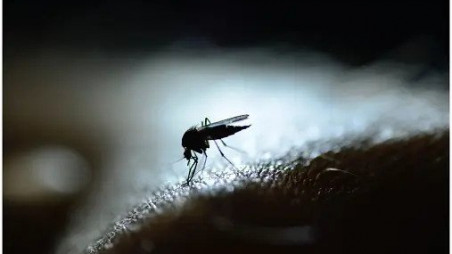2,407 cases and six deaths: Most Barguna wards at high risk of dengue
So far, the Directorate General of Health Services (DGHS) has reported 8,870 dengue cases and 36 deaths nationwide this year

A serious dengue outbreak has struck Barguna municipality, with five out of its nine wards identified as high-risk zones, according to a report by the Institute of Epidemiology, Disease Control and Research (IEDCR).
In a press briefing held today (25 June) at the IEDCR auditorium, IEDCR Director Dr Tahmina Shirin said, "It is still too early to fully assess the severity of the outbreak. More time and data are needed."
So far, the Directorate General of Health Services (DGHS) has reported 8,870 dengue cases and 36 deaths nationwide this year. Of these, 2,407 cases and six fatalities are from Barguna alone, making it one of the hardest-hit districts.
Dr Shirin said that Barguna Sadar recorded the highest number of infections, followed by Patharghata and Bamna. Betagi and Amtali upazilas reported the lowest numbers. "Many infections may still be undetected due to lack of data from private hospitals," she added.
Teams from IEDCR, the DGHS, and the Health Services Division conducted field investigations from 16 to 22 June and revealed these alarming entomological data.
Virological analysis showed that 46.5% of dengue patients in Barguna were infected with the DENV-3 serotype, followed by 39.5% with DENV-2. An additional 14% had co-infections of both DENV-2 and DENV-3.
The DENV-2 and DENV-3 serotypes have been described as virulent genotypes and are commonly associated with more severe disease outcomes.
The Breteau Index—a key indicator of Aedes mosquito density—was found to be 153% in Barguna Sadar upazila, far above the 20% threshold considered hazardous. The density of mosquito larvae in the town is reportedly 8.5 times higher than normal, it added.
Dr Ratna Das, principal scientific officer at IEDCR, highlighted environmental factors exacerbating the crisis. "There's a shortage of safe drinking water in Barguna. People often store rainwater in large containers, but many fail to keep them covered or clean," she said. These conditions provide ideal breeding grounds for Aedes mosquitoes.
She also warned that infected individuals often do not use mosquito nets, allowing transmission within households.
Mosquitoes were found breeding predominantly in household containers like plastic drums, mugs, flowerpots, and bottles, with higher density indoors than outdoors.
As hospitals in Barguna are experiencing increased patient pressure, eight medical officers and two consultants have been assigned there. Additionally, public awareness campaigns and mosquito control initiatives have been intensified, she added.
Dengue claims 2 more lives, 326 newly hospitalised
Two more deaths were reported from dengue in 24 hours till yesterday morning, raising the number of fatalities from the Aedes mosquito-borne disease in Bangladesh to 36 this year.
During the same period, 326 new patients were admitted to hospitals around the country.
Among the newly infected, 255 are from outside Dhaka, including 118 from the Barishal division, according to the daily press release issued by the DGHS.
Last year, dengue claimed the lives of 575 people around the nation. According to the DGHS, there were 1,01,214 dengue cases and 1,00,040 recoveries in the same year.



 Keep updated, follow The Business Standard's Google news channel
Keep updated, follow The Business Standard's Google news channel















